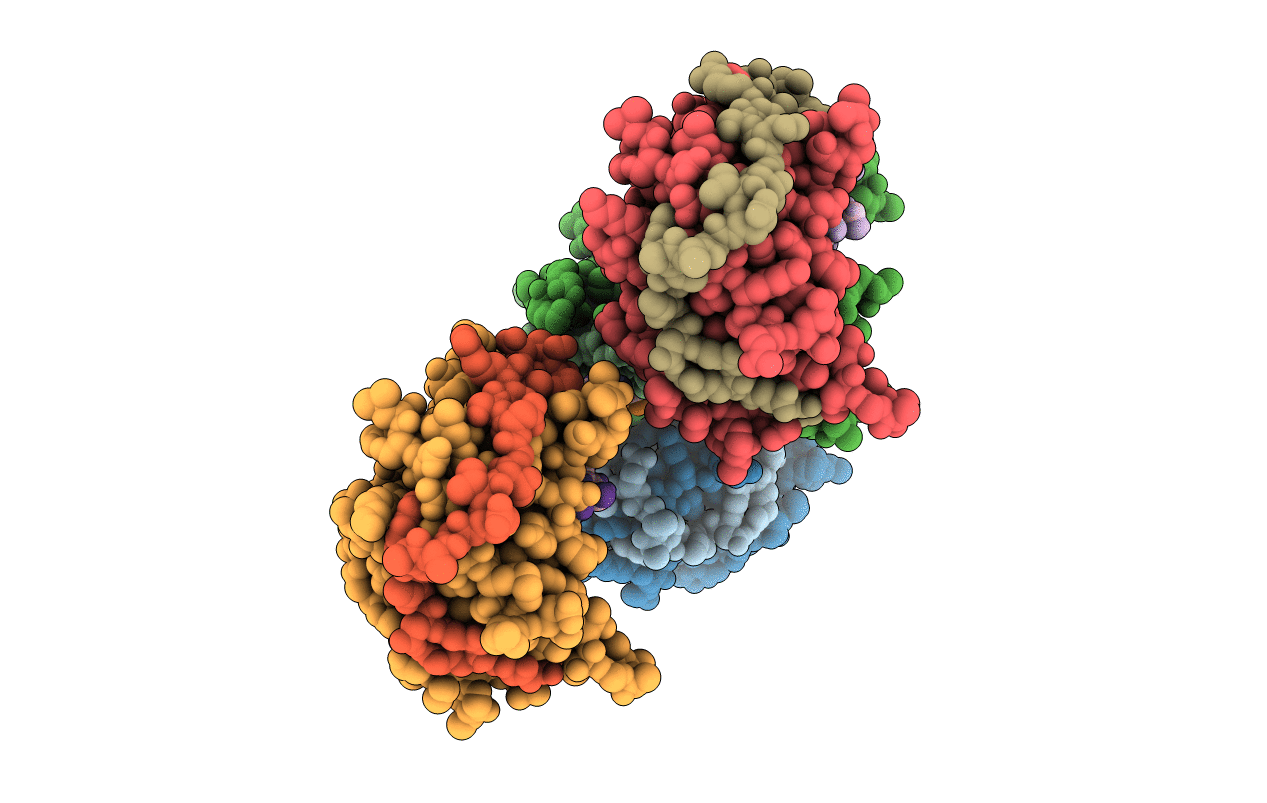
Deposition Date
2019-03-28
Release Date
2019-06-26
Last Version Date
2024-11-13
Entry Detail
PDB ID:
6JPW
Keywords:
Title:
Crystal structure of Zika NS2B-NS3 protease with compound 1C
Biological Source:
Source Organism:
Zika virus (Taxon ID: 64320)
synthetic construct (Taxon ID: 32630)
synthetic construct (Taxon ID: 32630)
Host Organism:
Method Details:
Experimental Method:
Resolution:
1.95 Å
R-Value Free:
0.20
R-Value Work:
0.16
R-Value Observed:
0.17
Space Group:
P 21 21 21


